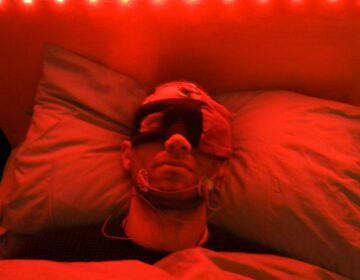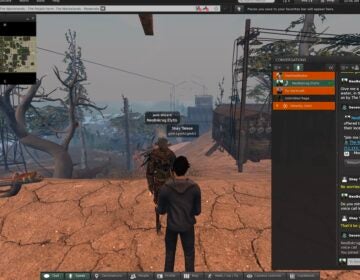Why archaeologists study virtual worlds from video games
There’s a growing field of academic study where archaeologists study virtual worlds, or work with game developers to recreate historical sites.
Listen 12:11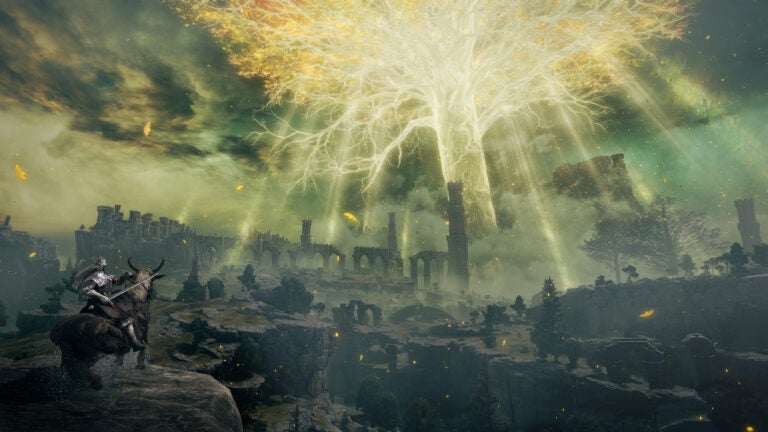
Scientists Alex and Pat spent many hours investigating details of From Software games, such as the recently released game Elden Ring. (BANDAI NAMCO Entertainment)
This story is from The Pulse, a weekly health and science podcast.
Find it on Apple Podcasts, Spotify, or wherever you get your podcasts.
During the pandemic lockdown in 2020, longtime friends and scientists Alex and Pat played video games together to hang out virtually. It had been years since they last played video games at all, and the ones that they picked captivated them so much that they dedicated many hours outside of work to study the worlds they explored virtually and document their findings on YouTube for tens of thousands of subscribers.
“This is not … just a video game. There’s layers upon layers of some very real seeming … history there,” said Alex.
We’re not using Alex’s and Pat’s last names because they don’t want their gaming interests to get mixed up with their day jobs as scientists.
They played games from the Japanese studio From Software, which is famous for a series of action games set in medieval-looking fantasy worlds with punishingly difficult combat and spectacular boss fights. The game developer has said he intentionally does not explain how the worlds in their games came to be, so players feel like they help create the world as they play.
“Pretty much 95% of the history behind these things is purged from the records just like in real history,” said Alex. He grew up in Athens, Greece, so he’s used to seeing ancient ruins that are just there without any explanation. He said From Software games give him a similar feeling.
“The ruins are not there for you to interpret and figure something out; you’re just there despite them,” he said. “Not everything is catered to you.”
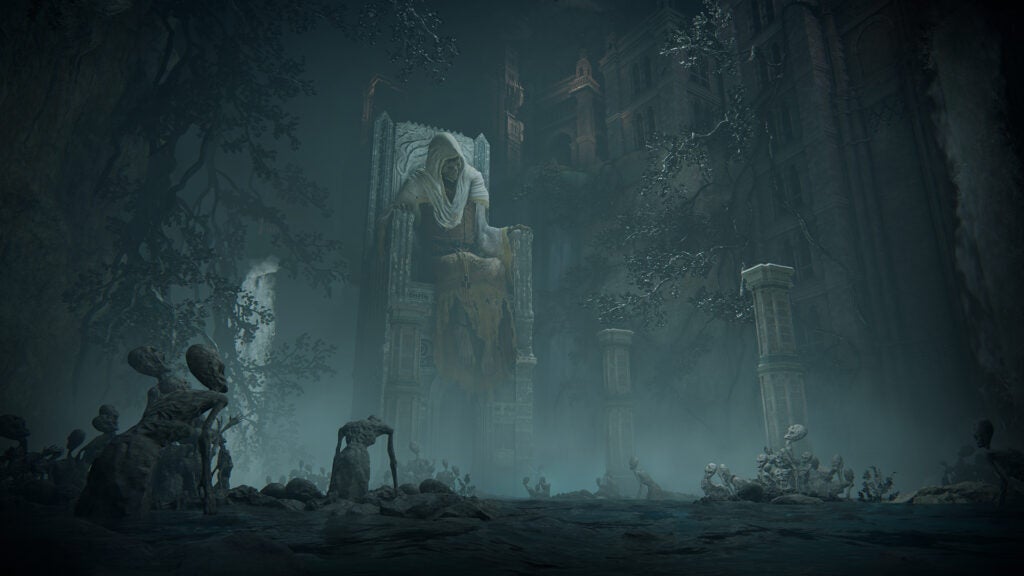
It takes Alex and Pat a lot of work to piece together a theory to explain the details of From Software’s worlds. For example, one of the newest games, Elden Ring, has prominent buildings called Divine Towers that loom above almost everything else. Pat said they noticed that all the Divine Towers have what look like patches of rock, but only on one side, and not always the same side.
“We just wanted to explain like — why the hell did the developers make this beautiful tower and then ruin one side of it with like a bunch of crap?”
Explaining this strange feature became an intellectual quest: Could these towers have been carved out of giant vertical rocks? Could there have been a meteor that fell into a pool of lava and some of the lava splashed onto the side of the towers?
“Just to give you a sense of how much off the deep end we’ve gone, we made a map, and we drew the angles of which face … this amorphous rock sludge was on and tried to see: Could this be compatible with … a single … volcanic eruption or an impact event like a meteor?”
After a year of research and discussion, they concluded that giants built the towers. Then the earth in this game world was pelted by meteors that turned the crust back into a liquid, the lava cooled again, and some of it ended up on these towers.
They detail their process and findings on their YouTube channel, where they are part of a thriving community of From Software fans who puzzle over details of the game lore.
What Alex and Pat and other lore hunters do falls into a relatively new academic discipline called archaeogaming. Archaeologist Andrew Reinhard came up with that term, inspired by questions he had while playing World of Warcraft 10 years ago.
“You’d be going around the landscape and all of a sudden, there’d be this ruined temple. Well, how did that get there?”
Reinhard became so interested in these fantasy worlds that he did his PhD thesis partly on archaeological studies of the Elder Scrolls 5: Skyrim, a fantasy role playing game, and No Man’s Sky, a space adventure and survival game with entire galaxies to explore. Recently he’s also been studying Fortnite, a competitive online shooting game where the setting and environment change.
“My kid will tell you I became a crack Fortnite player in order to kind of survive,” he said, adding that he’s like other archaeologists in that he wants to understand and document human culture.
Subscribe to The Pulse
“Digital spaces have this kind of emotional resonance and connection across generations and also across geographic boundaries,” Reinhard said, noting how many people still recall their memories of the worlds in the Super Mario or Zelda series. “As an archaeologist, you feel … some kind of thrill … being able to see this happen and unfold in real time.”
Using virtual worlds to understand the past
Studying virtual worlds is still not quite mainstream with his fellow archaeologists but it’s a growing field. Other archeologists use virtual worlds to better understand and recreate the history of the physical world.
For example, archaeologist Kaitlyn Kingsland from the University of South Florida studied an ancient villa in Sicily, where visitors have to stand on raised platforms and look down on the intricate mosaics on the floor to protect them. She’s working with a team to make a game using the existing 3D data so people can virtually walk on the mosaic floors like the Romans did.
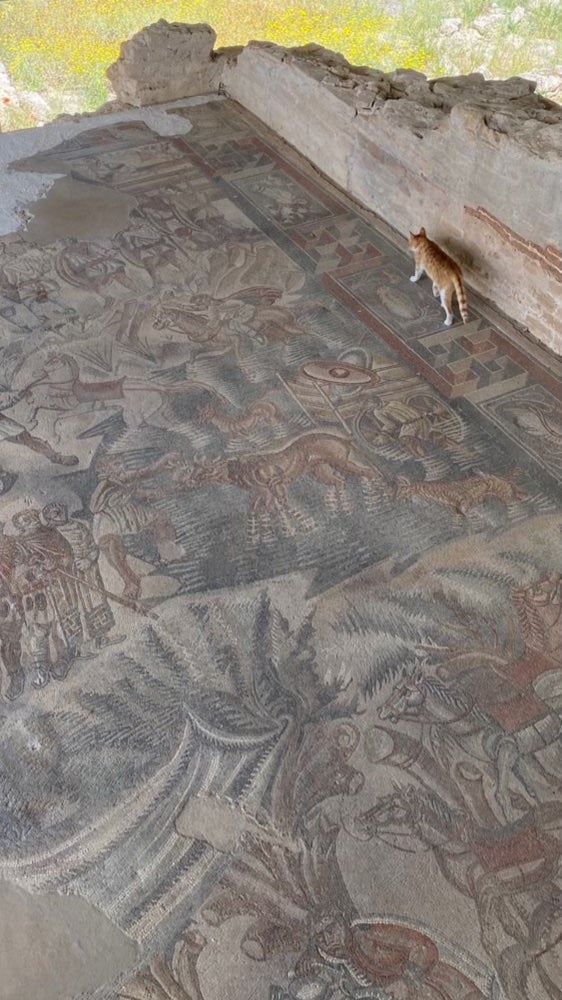
“We talk about how things used to look in the ancient world and there’s no real way for somebody to visualize that level of scale until you’re in the digital environment where we … have reconstructed that.”
Archaeologist Colleen Morgan from the University of York in the U.K. has not only recreated ancient worlds virtually, she also studies whether interacting with virtual avatars of historic figures will change the way people think of them. Her PhD supervisor once commented that we view people from the past as “faceless blobs.”
She worked with researchers and video game creators on an experiment, where they found that after museum visitors in York spent 10 minutes with two historic people from ancient Roman times in virtual reality, they looked at exhibits about those people a little more carefully.
Researchers try to create accurate historical representations in virtual settings. But for Pat and Alex, the fans of From Software games, the fun is all about the fact that what they’re trying to understand is fantasy.
“It gives an opportunity to have these interpretations that are kind of safe,” Alex said. “Having this … diversity of interpretations for a game is great, having too many fanciful interpretations for … real history’s kind of a little bit more problematic, because some are right some are wrong and they’re also consequential. In this case, it’s like a sandbox for people that are interested in real history as well.”
WHYY is your source for fact-based, in-depth journalism and information. As a nonprofit organization, we rely on financial support from readers like you. Please give today.






